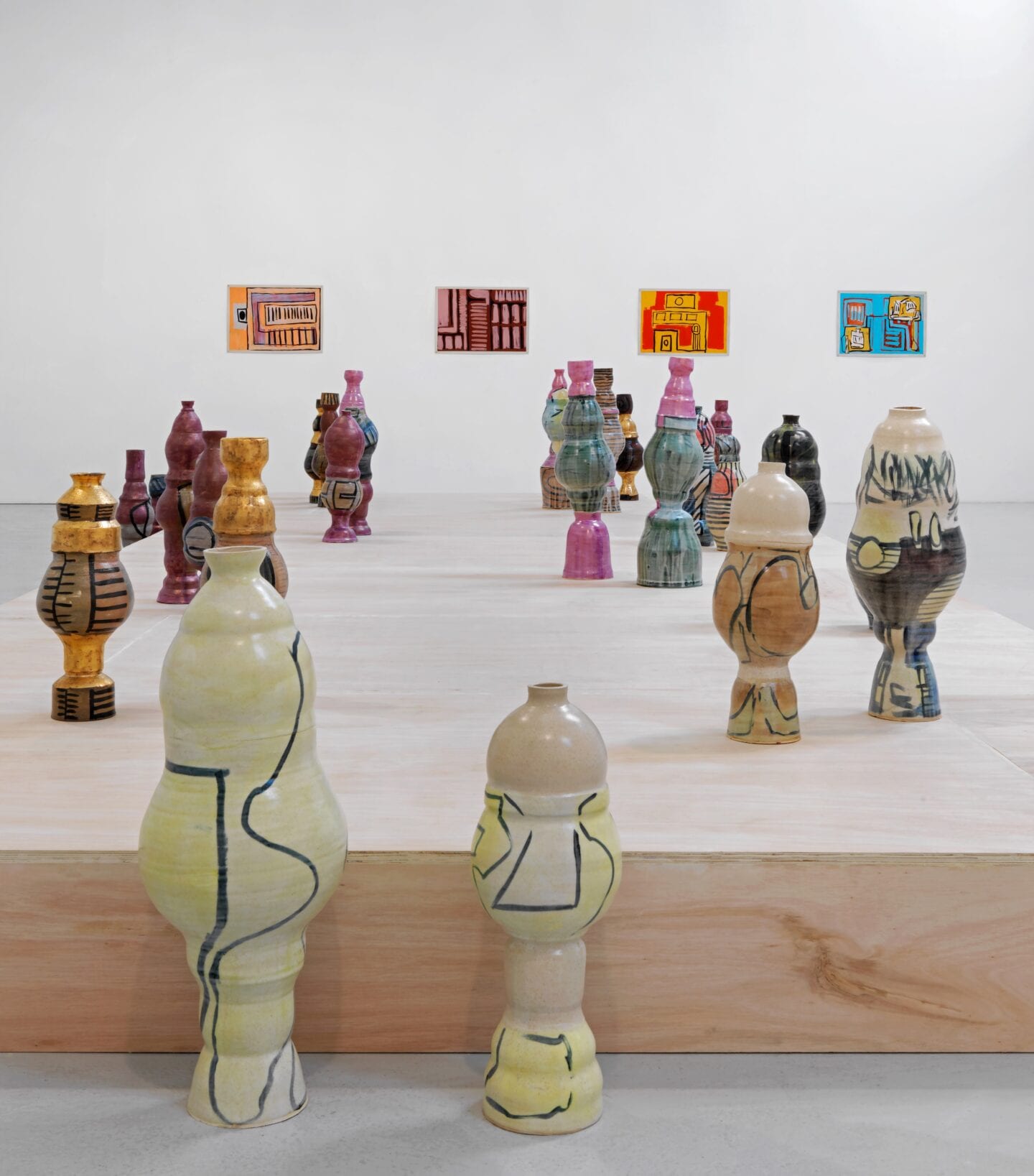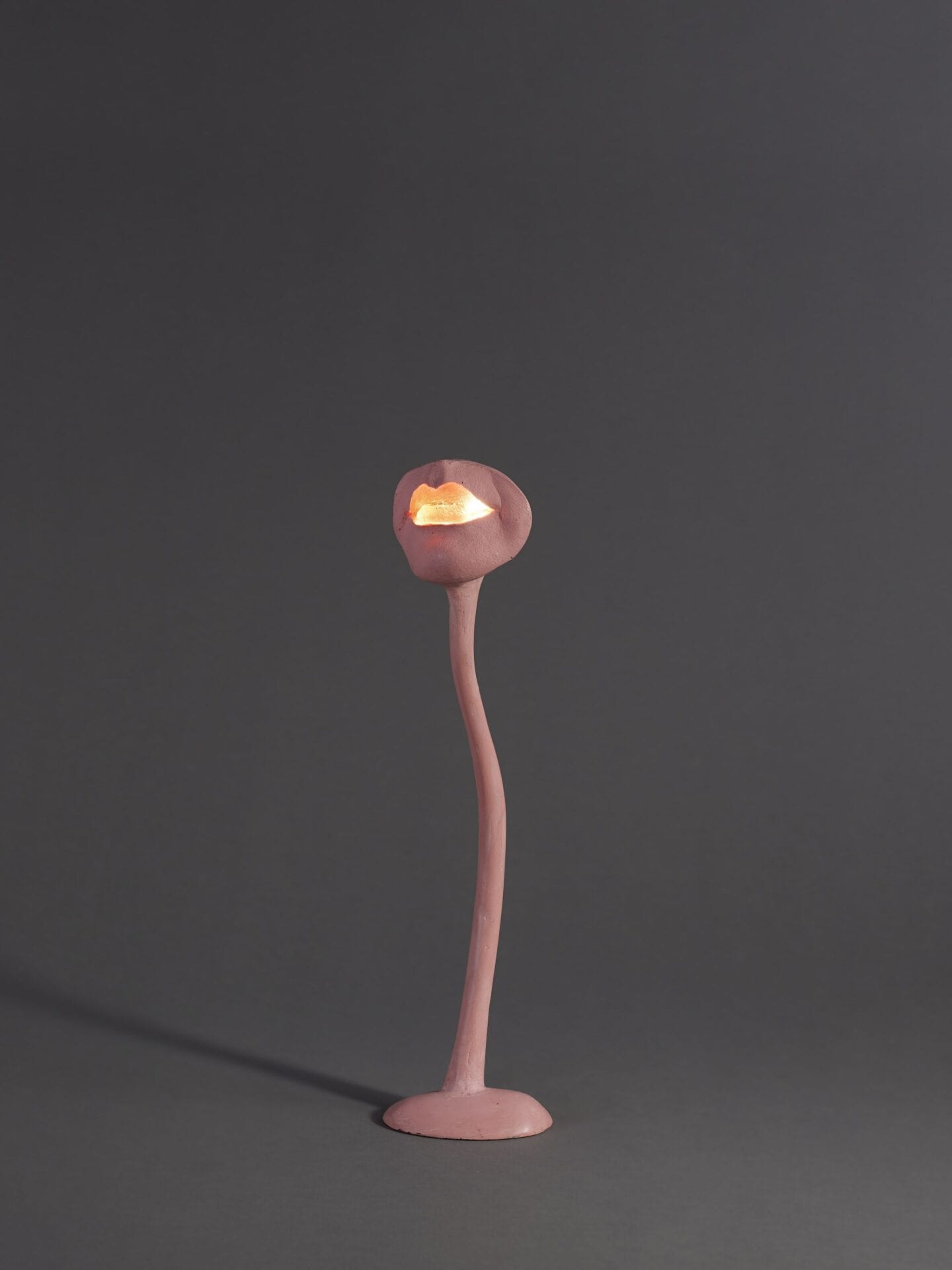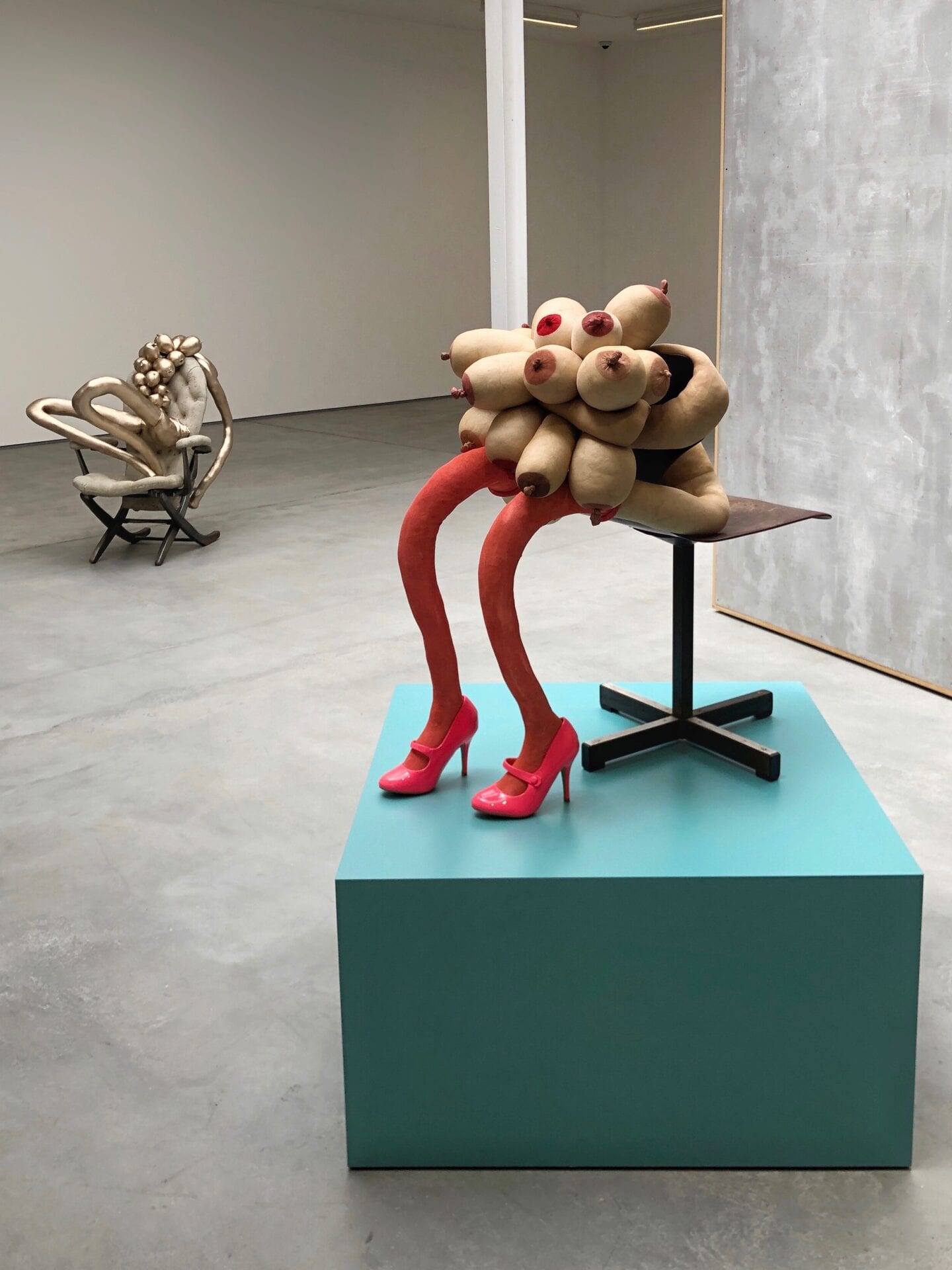Catch these breathtaking exhibitions by some of our favourite female artists in London before they close.
London galleries have cautiously begun to reopen their doors after the government’s green light on July 4th, bringing back the irreplaceable experience of enjoying art in the flesh. Each gallery has adopted its own set of safety measures, so that Londoners can once again safely set foot in white cubes that transport us beyond the confinements of quarantine.
Female artists dominate this summer’s art scene with dynamic, powerful, visionary exhibitions. Sculptures reveal the artists’ exploration of the female body, while paintings unveil the impact of colour on our senses, reminding us of the importance of interacting with works in person to understand them in relation to our own physical presence. We have rounded up our 5 favourite exhibitions you don’t want to miss:
Bridget Riley: Studies 1984-1997 | David Zwirner

Bathed in the sunlight of David Zwirner’s top floor, the hedonistic colours of Bridget Riley’s works will undeniably fill you with joie de vivre. Her oscillating palette of pastel pink, peach, amber, cerulean blue and every hue in between floods the picture plane with energy. As Kandinsky wrote in Concerning The Spiritual of Art, ‘Colour provokes a psychic vibration. Colour hides a power still unknown but real, which acts on every part of the human body.’ Riley expands on Kandinsky’s synesthetic understanding of colour to create a tangible sensation. Her geometric structures produce an optical phenomenon, which disorients the viewer’s eyes as they dance across these kaleidoscopic surfaces. As a result of Riley’s meticulous arrangement, the contrasting colours in her works harmonise with each other as different instruments do in a symphony.
Although Riley typically removes the artist’s hand from her paintings, she practices a different approach in this exhibition’s working studies. Standing up-close to these works, the viewer can not only appreciate the slight tremble of the artist’s hand, but also read the notations she scribbled along the edges of the drawings, revealing the intimate thought process behind her chromatic experiments. Riley’s rhythm of colour is the most arresting element of her works, and her psychedelic patterns will pulse with you long after you have left the exhibition.
Shawanda Corbett, Neighbourhood Garden | Corvi-Mora

“The vessels are stand-ins for people. They are just like bodies: that’s why there are different shapes, colours and layers to all of them.” —Shawanda Corbett
Entering the garden of Corbett’s sculptures, one is greeted by her beautifully painted ceramics that seem voluptuously alive. In this exhibition, the colours of Corbett’s ceramics echo that of their surrounding works on paper to create a dialogue of her memories growing up as a woman of colour. Each vessel is inspired by a real person in the artist’s life, and pays tribute to characters who are often reduced to stereotypes in the neighbourhoods where she grew up. Corbett celebrates the people in her community by giving these bodies lustrous colours, exquisite designs, and a sense of tangible humanity that touches the viewer who has to closely encircle the wooden platform to appreciate the precious figures. Further incorporating herself into her works, Corbett painted the bodies of her ceramics while listening to jazz music, which enabled her hand to perform an improvisational dance. With every gestural stroke, she translated the shapes, patterns, and colours she heard in the music onto the bodies of the ceramics. This exhibition marks the impressive first solo exhibition of the artist who, despite being born without one arm and without legs, never stopped dancing in every sense of the word.
Alina Szapocznikow: To Exalt the Ephemeral | Hauser & Wirth

“My gesture is addressed to the human body, that complete erogenous zone, to its most vague and ephemeral sensations. I want to exalt the ephemeral in the folds of our body in the traces of our passage.” —Alina Szapocznikow
Alina Szapocznikow was fervently dedicated to exploring the human body as a vessel that moves through the fleeting passage of time. Her sculptures are often tender but fragmented, which is perhaps reflective of her own experiences in overcoming the physical hardships in her short but significant life—surviving the horrors of the Holocaust as a Jewish teenager living in Poland, later battling tuberculosis, and eventually succumbing to breast cancer. She used her own body as the mould for her sculptures and experimented with an array of materials including polyester resin, polyurethane foam, fiberglass, plaster, bronze, and even car parts, giving permanence to the ephemeral human touch and body.
The exhibition traces Szapocznikow’s passage of time through her bodily sculptures—starting with ‘Noga (Leg)’ (1962), a plaster cast of the artist’s right leg, and ending with her beautiful series of lip lamps lined against the back-wall of the gallery, made during the period of 1964-1971. Alina echoed her contemporaries who were also dedicated to exploring the female body, including Eva Hesse, Hannah Wilke, and her friend Louise Bourgeois, to whom she gifted two lamp sculptures. Szapocznikow revealed the body’s inevitable surrender to life’s violent volatility, but she also illuminated the power of the body by declaring it ‘the only source of all joy, all suffering, and all truth.’ Although Szapocznikow was dedicated to showing the vulnerability and ephemerality of the human experience, she in fact gave her own body immortality by using it to mould permanent sculptures that will live on to preserve her legacy.
Sarah Lucas: Honey Pie | Sadie Coles HQ

Sarah Lucas has preserved the entrepreneurial spirit of her generation of Young British Artists by continuing to give new life to found objects. In her latest exhibition, Honey Pie, Lucas expands on her Bunny series first seen at Sadie Coles in 1997. Honey Pie presents five soft sculptures constructed from readymade materials such as chairs, tights, and heels, which are juxtaposed with five equally provocative hard, bronze sculptures. These silhouettes are passively bent and contorted to take the shape of the chairs on which they are lifelessly draped, stripping the figures of their autonomy. Elevated on high-gloss plinths, these fleshy figures allude to the objectification of the female body.
While Lucas mocks the stereotypical male fantasy with sculptures such as ‘Sugar’ (2020), in which a bouquet of breasts seem to bloom out of a pair of lithe pink legs in heels, she also challenges gender stereotypes with other more androgynous sculptures which consist of both male and female organs. These brightly-coloured sculptures may seem beguiling and simply humorous at first glance, but the works harbour layers of visual puns and satirical commentary on how reclining female nudes are portrayed throughout art history.
Magalie Guérin: q p | Amanda Wilkinson

Chicago-based artist Magalie Guérin channels the energy of the Chicago urban scene through her paintings in q p. The paintings are displayed in pairs to elicit a dialogue between the mirroring works. The cacophony of colours swirl in an improvised manner, echoing the vibrant Chicago jazz scene and bringing the works to life. The sensation created by the movement of colour across the canvas is exuberant and joyous. The works’ throbbing rhythm is not only created by its ribbon of shapes, but also by the complex textures that make up the painting. Although the works are abstract, one can almost feel Chicago’s lofty grey buildings towering overhead, hear the smooth jazz blown from the yellow trumpet, see the dark green Chicago river flowing out of the canvas. These paintings are at once a tribute to Chicago’s architecture and its jazzy energy, and just for a few moments, they transport the viewer to the bustling city.



